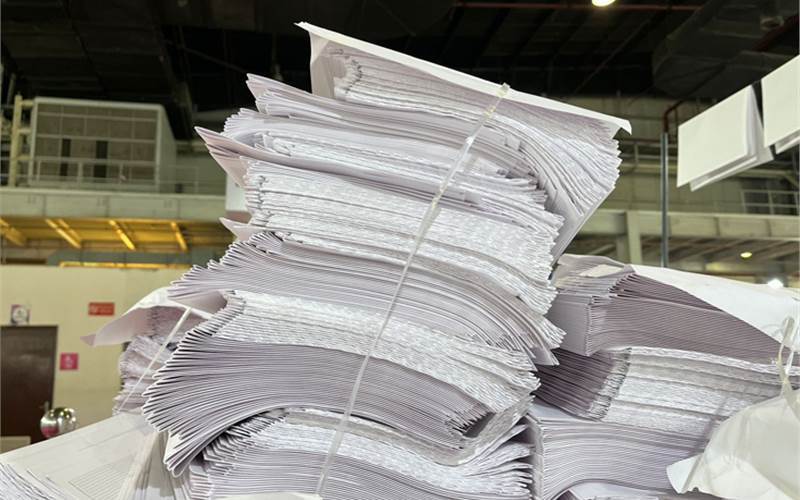One more round of price increase for paper by September-end
Paper prices are seeing a correction. With demand during the festival season likely to increase with the packaging boom as well as gifting items. Dibyajyoti Sarma tries to decipher what the recent price hike means against the backdrop of a slowdown in the US and European markets as well as sluggish Chinese demand not picking up.
01 Sep 2023 | By Dibyajyoti Sarma
There have been price hike circulars issued by ITC, BILT Graphic Paper Products and Andhra Paper. And the increase looks significant; from Rs 1,000-3,000 a tonne for various grades, including boards.
On the one hand there is a huge demand for writing and printing paper which is driven by the education sector, and the growth of the e-commerce sector which is creating opportunities. And on the other hand, even today, per-capita consumption of paper in India is low. Is the paper sector which is expecting to yield high returns in the next 5 to 10 years carefully calibrating the prices? Paper prices were 90,000 MT, and saw a Rs 3,000 MT dip in June followed by another Rs 4,000 MT drop in July.
Ashok Java of CH Java and Co said, "The prime factor driving the price correction is the local scarcity and increase in raw material (i.e. wood) prices." Java added, "This price increase comes on the back of several rounds of reduction in the past six months. The current increase will keep the prices still substantially below last year's prices."
Java added, "Additionally, when it comes to paperboard the correction was more than the increase in many cases." Therefore, in Java's opinion, "The impact to the end-user will not be significant as the prices will still be substantially lower than the all-time high even after the increase."
Nimesh Vora, director at Srinivas Papers said, "The increase is minimal and not as steep as compared to the discounts and reductions passed to the converters in the past 12 months." When asked if the cost for print converters will increase, Vora said, "Of course, and the cost should be passed to the end-users."
Vora added, "The reduction in rates was mainly tuned to demand and supply gaps. Some paper mills were short of coverage to run their machines and were offering discounts, although the cost was higher there was a domino effect." This meant A-grade large mills had to offer discounts and retain their share in order to match the demands of print converters who were getting supplies at a lower price from other mills.
We asked Ashok Java about the prices of writing and printing (W&P) paper which have been raised from 10 August. This is on the back of rates falling by 25% during June and July. How do you explain this bottoming out? Java said, "Prices of writing and printing papers had risen quite substantially last year." Readers will recall that a year ago, paper availability in India, as well as paper prices had shot up significantly. There was talk about how it would impact students with prices of textbooks increasing substantially.
In its annual report, ITC Ltd said the Indian education and stationery products industry holds potential driven by growing literacy, increasing enrolment ratios, the Government’s continued thrust on the education sector and a favourable demographic profile of the country’s population.
Java concurred, "The education season is round the corner and so perhaps prices may consolidate and later rise going forward.". He added, "In 20023, the correction was expected once the prices peaked. Demand for the education sector eased as did textbook paper requirements."
Paper and paperboards are subject to commodity cycles and it appears that the bottom had been reached a few weeks before this price rise was announced. Paper pundits in July were saying, "If paper mills receive imported material at a higher cost, domestic paper costs will rise." Costly imports, and the Russia-Ukraine war hit India's paper supplies, and resulted in a price surge in India.
The prices of these materials have been influenced by global factors such as the demand and supply of these materials in the international market and the fluctuations in the exchange rate. Another factor that affects the price of paper in India is the manufacturing cost.
Nimesh Vora said, "The hard wood pulp or the local wood prices like Eucalyptus, subabul, etc are on A north trajectory. There is a shortage of this wood." One of the reasons as per the paper pundits is, poor harvest and plantation which has led to shortage in yield. Also, as Vora said, "The MDF industry is growing very fast, thus the demand for wood pulp will remain strong."
As per Vora, the cost escalation in wood pulp is "To the tune of more than 25% on the final paper and paperboard products." Hence, he cautioned, "There would be another round of price increase by the end of September. By then the paper mills will recover their costs."
Meanwhile the international softwood prices have increased by USD 50-70 per MT.
In spite of all this, the market sentiment is upbeat.
Ashok Java said, "My guesstimate is, the seasonal and festive demand will remain strong at least until the end of October."
Nimesh Vora concurred, when he said, "The order books with most of the print converters look healthy. I feel, the festive season buying looks to be very good." He added, "Leaving aside the pharma industry which is normally away from vagaries, all end consumer industries seem to be buoyant. The paper and paperboard industry should have a healthy order book till December 2023."












 See All
See All